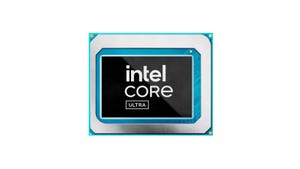If there were such a thing as an anti-WiMAX lobby group (and let's put aside cynical thoughts that one already exists and is headquartered in Stockholm) it would have had a lot of fresh material to work with recently.
If there were such a thing as an anti-WiMAX lobby group (and let’s put aside cynical thoughts that one already exists and is headquartered in Stockholm) it would have had a lot of fresh material to work with recently.
The rumour that US cable giants, Comcast and Time Warner Cable, might invest as much as $1.5bn in a joint venture to resurrect the nationwide mobile WiMAX ambitions of Sprint and Clearwire is one more bit of grist that can be added to the anti-WiMAX mill. Although such a move may sound positive for WiMAX supporters at face value, it arguably underlines a perception that nationwide mobile WiMAX in the US (which would dramatically boost the economies of scale for 802.16e kit if it went ahead) is in trouble and needs to be rescued.
And if the joint venture is confirmed, then a story could surely be spun that because there are so many members in the JV (Google and Intel were also rumoured to be part of the rescue package) this will inevitably expose strategic differences and lead to network rollout delays. In turn, this would shorten any time-to-market advantage mobile WiMAX would have before LTE network rollout by AT&T and Verizon, which is pencilled in for 2010.
If no JV materialises, then WiMAX detractors would have even more justification to rub their hands in glee. Looking at the recent financial results of Sprint and Clearwire (a net loss of $29.5bn and an Ebitda loss of $134m respectively during Q407), it is highly unlikely they have the capital resources to fund nationwide mobile WiMAX rollout, even in a partnership together. Sprint Nextel estimates that the capex bill for nationwide mobile WiMAX across the US is a hefty $5bn.
The results of 700MHz auction in the US were also, arguably, a disappointment for WiMAX supporters; the WiMAX Forum is already committed to developing TDD and FDD profiles for 802.16e in this frequency band. The best-case scenario for WiMAX enthusiasts (albeit an unlikely one), was surely for a new nationwide entrant to emerge from the auction. Instead, it was the old guard and confirmed LTE supporters, AT&T and Verizon, which scooped up much of the 700MHz spectrum. Admittedly, there were 99 other licence winners in the auction and some of these, particularly the rural telcos, may indeed opt for mobile WiMAX. If that did happen, however, it would still be hard to describe 700MHz mobile WiMAX as anything other than a niche mobile broadband technology in the US.
But what surely would have caused the biggest whoops of delight in our hypothetical anti-WiMAX PR agency are the remarks made by Garth Freeman, CEO of Buzz broadband, an Australian ISP. He described WiMAX a “disaster” and criticised the technology’s poor non-line of sight capabilities and high latency times (which, Freeman claimed, made its VoIP service unusable).
For the sake of balance, however, it was right that Airspan Networks (WiMAX kit supplier to Buzz) made a swift rebuttal to Freeman’s claims. Declan Byrne, CMO of Airspan, called Freeman’s allegations “a distraction to the WiMAX industry” and if the problems Buzz has experienced can indeed be traced back to the Australian ISP’s own network as opposed to Airspan’s WiMAX kit, as Byrne claims and seems most likely as no other operators, at least not openly, have come out with similar WiMAX disaster stories of their own, then Freeman’s remarks were clearly an unfair swipe at the WiMAX community.
It would also be unfair to judge WiMAX on what happens in the US alone, particularly as the opportunity in emerging markets look so substantial. The Indian government in particular has been a strong supporter of WiMAX to meet its broadband subscriber targets (set in 2005) of 20 million broadband subscribers by 2010. Moreover, it has already reserved 20MHz of spectrum for state-owned BSNL in the 2.5GHz frequency band, and has plans to auction three more WIMAX 2.5GHz licences this year with 10MHz channels set aside for each winner.
It is also worth pointing out that BSNL’s plans to expand WiMAX coverage to 200 million of India’s population within three years would eclipse Sprint Nextel’s proposed nationwide mobile WiMAX network.
The decision taken by the ITU at last year’s World Radiocommunication Conference (WRC-07) to allocate large chunks of the 700MHz band to IMT services in Asia and the Americas (WiMAX is already designated as an IMT service by the ITU) is another fillip for the WiMAX camp. And, promisingly, the Indian government actually approached the WiMAX Forum last year to develop a 700MHz profile.
While there are still pressing challenges for the WiMAX community, not least in releasing certified 802.16e products as soon as possible, there is a bigger picture to look at than the US.
Read more about:
DiscussionAbout the Author(s)
You May Also Like







.png?width=300&auto=webp&quality=80&disable=upscale)

.png?width=300&auto=webp&quality=80&disable=upscale)
_1.jpg?width=300&auto=webp&quality=80&disable=upscale)



.png?width=800&auto=webp&quality=80&disable=upscale)